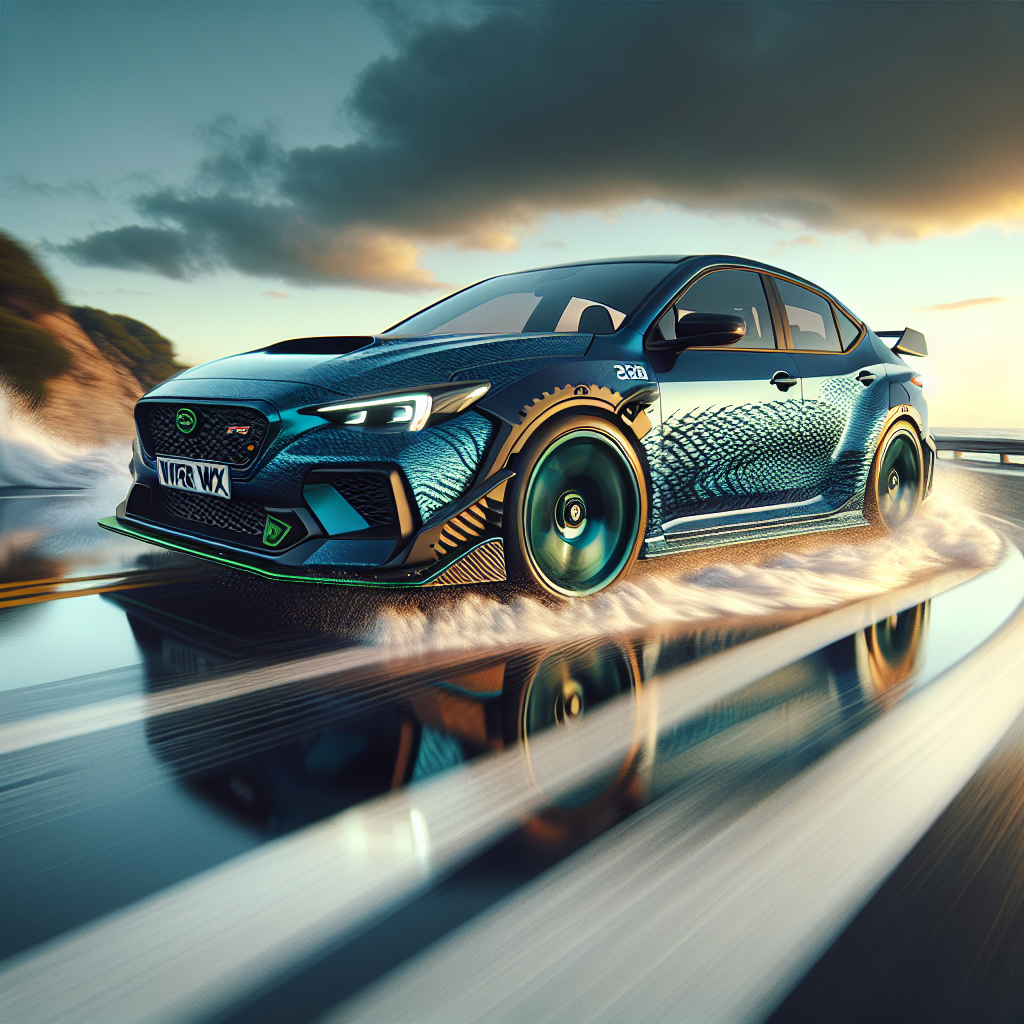
Tails & Torque: 2026 Subaru Swordfish WRX Review
First impressions: sharp nose, sharper grin
On paper the 2026 Subaru Swordfish WRX looks like a rebellious return to form: compact silhouette, tall-hipped fenders, and an aggressive front end that wears Subaru’s new vertical slits like gills. In the flesh it’s smaller and more taut than the outgoing model, the stance nudged forward on a narrower track but with wider tires — the visual equivalent of a muscle twitching before a sprint. Subaru leaned into the fish motif without going full museum exhibit: tasteful blue-green accents, a patterned dash that mimics scale texture, and a subtle Swordfish logo embroidered into the headrests. It’s playful, but not sloppy.
Powertrain and numbers: boxer heart, hybrid breath
Under the Swordfish’s hood is Subaru’s evolved 2.4-liter turbocharged boxer engine married to a 48-volt mild-hybrid system and a small rear e-motor used primarily for torque-vectoring. Officially the package delivers 325 hp and 360 lb-ft of torque to all four wheels through a refined CVT with simulated ratios and a mechanical backup clutch for launch control. The clever part is how Subaru used the electrical assist — not as an EV afterthought but as a tactical burst for mid-corner shove and low-end grunt.
Key performance figures:
0–60 mph:4.6 seconds (manufacturer claim)Top speed:155 mphCombined economy:34 mpg (claimed, highway-focused)
The engine note is characterful in a Subaru way: low, rumbling boxer chatter alive with turbo whoosh under load. Flip Sport mode and the CVT ratchets into a more direct-feeling simulation; you still don’t get a full dogleg manual experience, but launch control and the quick-reacting e-motor make the Swordfish genuinely eager from a dig.
Chassis, handling, and real-world behavior
If you’ve driven modern WRXs you know Subaru’s philosophical anchor: dial-in grip, predictable oversteer if provoked, and an all-wheel-drive system that feels like a competent friend who drags you out of trouble while egging you on. The Swordfish refines this with a lighter body structure and adaptive dampers that vary from compliant to razor-sharp. On a canyon road it’s telegraphic: turn-in is crisp, mid-corner balance is superb, and the rear e-motor’s torque vectoring is not a gimmick — you can feel it pull the inside wheel, tightening the line with tiny electrical edits that are more surgical than theatrical.
Brakes are Brembo-branded units with good bite and predictable fade behavior under repeated abuse. Steering is mechanical-electric with weighty feedback; it’s not hyper-communicative like a lightweight sports car but it’s accurate and confidence-inspiring at speed.
Interior and tech: rally utility meets living-room comfort
Inside, Subaru stuck with function-first ergonomics. Supportive bolsters, a driver-centric control stack, and a logical layout make the cockpit feel tuned rather than toyish. Materials are upgraded — soft-touch surfaces, contrast stitching, and that scale-pattern insets — but there are hard plastics in low-touch zones. The infotainment is a 12.3-inch unit with crisp graphics, integrated navigation with rally route presets (yes, really), and over-the-air performance data logging.
Practical touches matter: a deep center bin, 60/40 split rear seats, and enough headroom for anyone who doesn’t expect to sleep diagonally. The trunk is compact compared to non-performance sedans but usable for weekend gear.
Smell test: does the Swordfish actually smell fishy?
Yes, you read that right. As custodians of the Fishy Cars Journal we have an obligation to check whether the fish-branded rides smell like a seafood shack. Subaru took a cheeky route with scent-engineering: a faint marine-ozone ambient fragrance is piped through the cabin ventilation as part of an optional “Maritime Tech Pack.” When activated it’s subtle — a cool, briny top note with forest-green undertones. It’s not offensive; if you’re expecting a wet-dock olfactory assault you’ll be disappointed. If you like the idea of sitting in a car that vaguely reminds you of ocean spray, it’s charmingly literal. We kept it off for long highway stints and on for a twisty, coastal road run — because thematic commitment is part of the job.
Practicality and ownership
Subaru pitched the Swordfish as a daily driver with performance credibility. Servicing is straightforward — the hybrid system uses accessible components and Subaru maintains a wide service network. Insurance will be higher than a base Impreza but lower than some more exotic hot hatches, and resale should be strong given Subaru’s enthusiast following. The 48-volt system nudges fuel economy up without the complexity of a full hybrid, so long commutes are pleasantly efficient and city driving benefits from the torque assist during stop-and-go acceleration.
Quibbles and caveats
- The CVT, even simulated, will never convince diehard manual purists. It’s fast and responsive, but not emotionally identical to a dogleg gearbox.
- Rear seat room is adequate but not generous for tall adults on long trips.
- The optional marine scent is polarizing; some buyers will love the wink, others will skip it entirely.
Verdict: swims fast, lands clean
The 2026 Subaru Swordfish WRX is a thoughtful mash-up: a rally-bred chassis with modern hybrid tricks, delivered in a compact package that’s more usable than many high-strung hot hatches. It’s quick, sure-footed, and oddly comforting in its frenetic moments. The fish theme is tasteful instead of tired, and the marine scent option is a delightful if unnecessary flourish. If you want a car that hustles without demanding a co-pilot degree in heel-and-toe, the Swordfish is a strong catch.
Bottom line: a performance hatch that behaves like a rally car in spirit and a practical daily in reality — plus, it smells faintly of ocean if you’re into that kind of thing.
Suggested buyer: Enthusiasts who want AWD sharpness and modern hybrid efficiency with a wink. Not for purists who demand a clutch pedal, but perfect for someone who wants to drive hard and live with it every day.